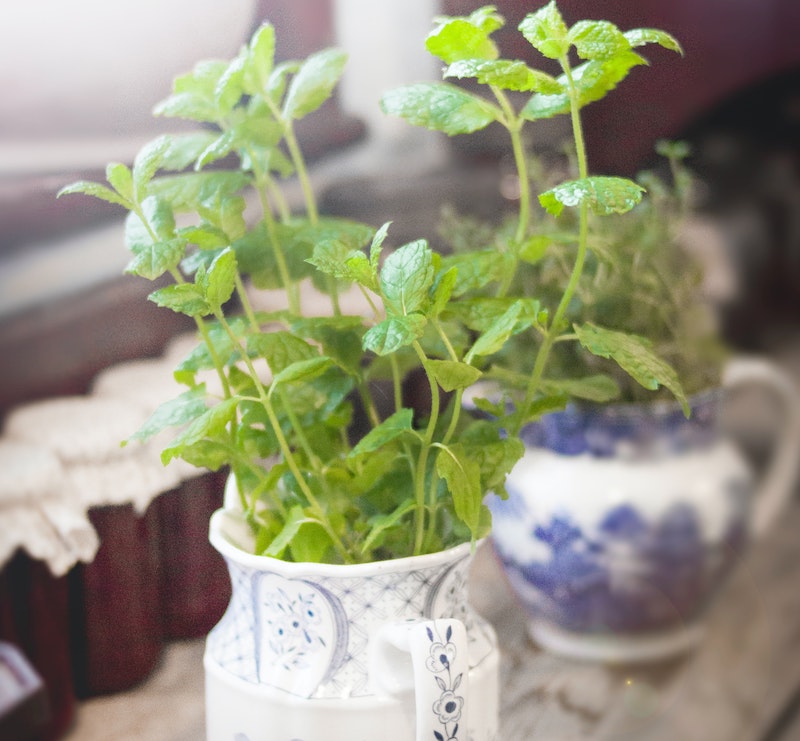Growing Oregano
Oregano (Origanum vulgare) is a perennial herb native to the regions of the Mediterranean and Western Asia. It features fragrant, soft, round leaves that are dark green in color. Oregano is edible and popularly used in cooking. This quick grower can reach one to two feet tall and wide. Oregano is hardy in USDA zones 4 through 10. This plant is an excellent choice for a windowsill herb garden. It is easy care, hardy, and low maintenance. Oregano blooms are beneficial to pollinators, but keep this herb away from curious pets.

Planting Oregano
During the springtime, plant your oregano in a hole that’s the same depth and width as the nursery pot your oregano came in. Space the oregano plants 8 to 10 inches apart for best results. The soil should be well draining but oregano takes very well to poor and sandy soils. Use compost sparingly upon planting as oregano doesn’t grow well in rich soil. Locate a bright, sunny location to plant in since your oregano will need 6-8 hours of sunlight daily. If you’re starting this herb indoors by seed, transplant seedlings to your outdoor herb garden or pot in the spring. Alternatively, oregano seeds can be directly sown into your outdoor garden bed. It will take oregano around 45 days from seed to reach maturity.
Watering Oregano
Oregano has a very low-maintenance watering schedule. Keep the soil slightly moist until the plant’s root system is strong and established. After that, you can decrease watering gradually. This herb is tolerant of periods of moderate drought. For a healthy root system, let the soil dry slightly between waterings. Oregano is susceptible to root rot when overwatered, so take care to check the soil moisture before watering. Oregano prefers to receive about one inch of water weekly.

Fertilizing Oregano
Fertilizing this plant could not be easier because you don’t need to! Oregano plants are not heavy feeders and do not typically need supplemental nutrition. This plant thrives in poor, sandy soil. If you have incorporated a bit of compost upon planting, that alone will provide plenty of nutrients through the growing season. Too much nitrogen can modify the taste of oregano and interfere with its classic earthy flavor. Avoid fertilizer if you plan to eat this herb.
Pruning Oregano
Pinch back oregano’s new growth once a week for a more tasty and bushy herb. Cutting the woody stems back to the base of the plant at the end of the growing season will encourage more lush growth next springtime. Every three to five years your oregano plant may need to be divided in order to promote new, tender growth.

Caring For Oregano in Pots
Oregano is a great choice for a small potted herb garden, or a windowsill plant. Keep it near the kitchen window for a perfect fresh garnish for your favorite dishes. Oregano grows the best in porous pots and containers. Select a breathable container like terracotta or any unglazed clay pot. Your oregano prefers a bit of room to spread out, but don’t choose a container that is too large since it will dry too slowly. A good patio pot size for example is typically about 10 inches in diameter and 6 inches deep.
Winter Care for Oregano
Caring for oregano over the colder months is usually fairly easy. These plants are perennials and cold hardy to zone 4. They are able to thrive and come back each growing season despite cold temperatures. After the first frost, cut back the woody stems. Leave a few inches of stem to protect the growth crown of your oregano. Then, cover the plant with three to four inches of mulch to help retain warmth and insulate the roots. Remove the mulch from the top of the plant before new growth appears in the spring.
 |
Author Chris Link - Published 2-25-2023 |
